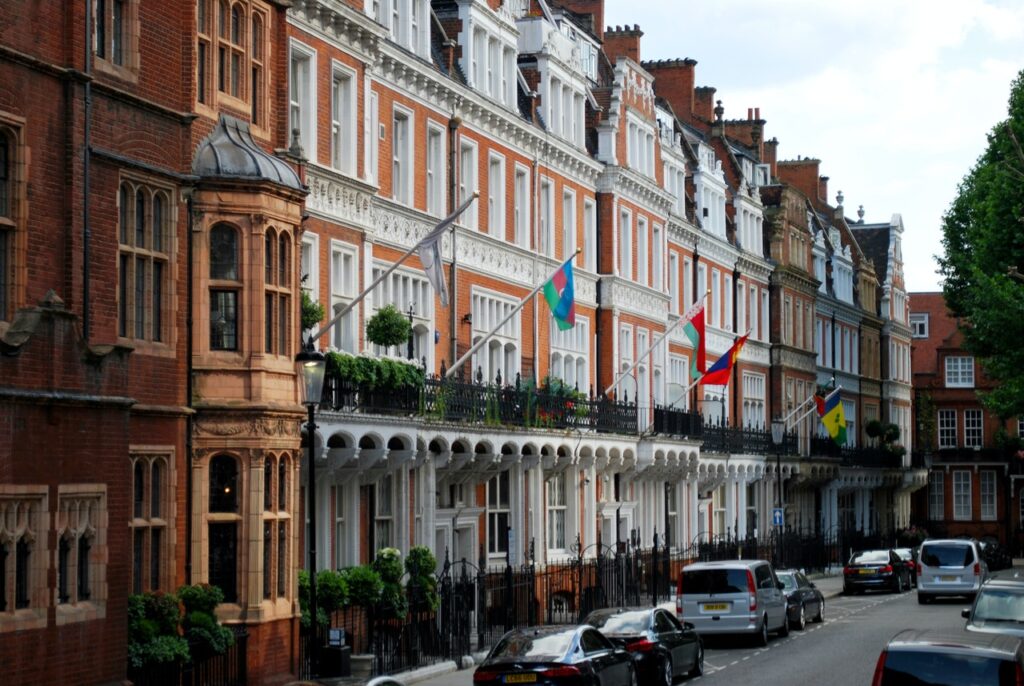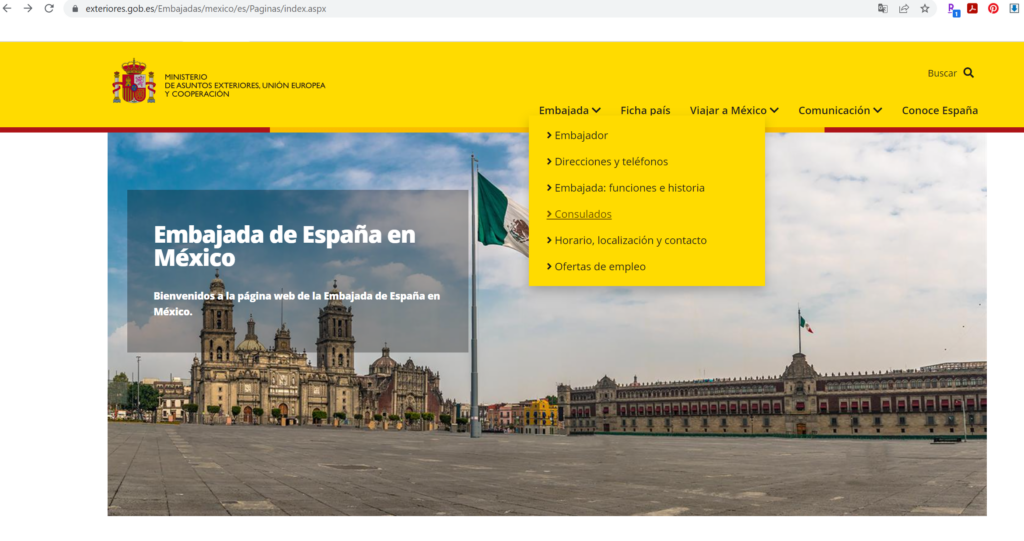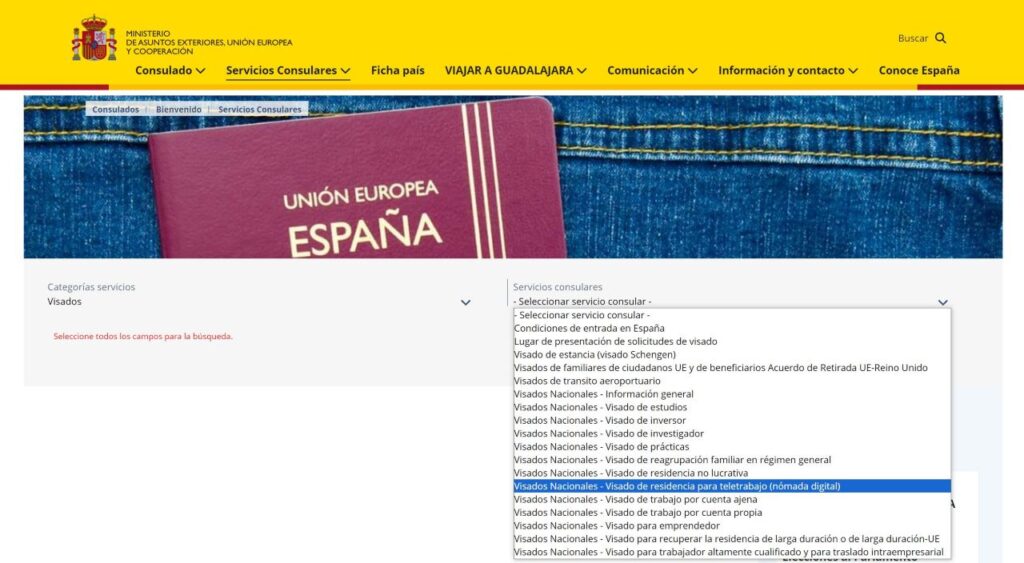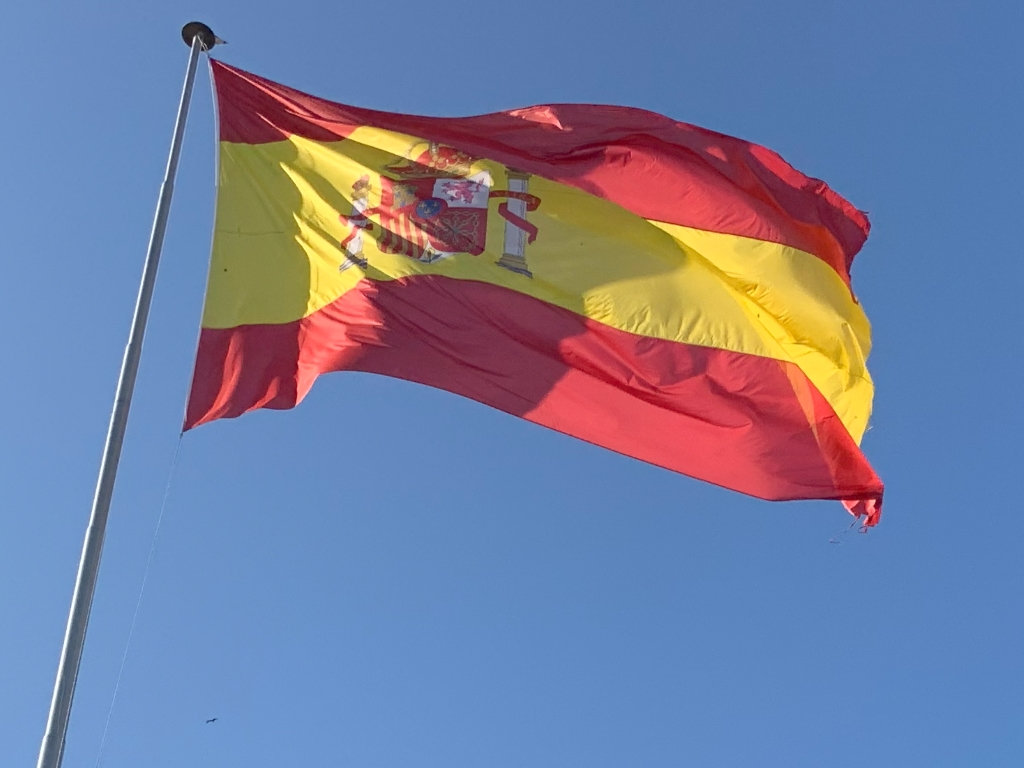August 8, 2023
Last update: May 06, 2024
There are a few ways in which you can improve your chances of success at getting a Visa to live in Spain. Here are some thoughts and tips on how to make this as smooth as possible from someone who has worked for 6 years in an Embassy and 4 in a Consulate. Tip number one, and fore and foremost the main one: trust the official information over any Facebook or friend’s advice. Start your search through the Consulate or Embassies page, not by asking openly on social media.

This section is based on my research before moving to Spain, my experience working with foreign affairs for more than ten years and on living through the process . You’ll see that I still could have done better when preparing the documents for our move. It is not so much that it is difficult, it is more that one can get a bit overloaded or lost among the information, so I’ll focus on the main parts and reference only official sources.
Table of Contents
Where to get a visa to Spain?
Let’s start with an example: suppose an Australian that lives in Cancun, Mexico, would like to get a visa to Spain. What would be the right place to look for it? First, let’s clarify that only Embassies and Consulates can make visas – anyone else claiming they provide visas is lying. But then, should the Australian contact the Consulate or Embassy of Spain, Australia or Mexico to get a visa to Spain?
As only Spain can issue a visa to Spain, the Consulate of Spain that covers the area of Cancun should be the institution to be contacted in our example. If there was no such consulate, the Embassy of Spain in Mexico City should be contacted. Notice that it doesn’t matter what kind of visa is being asked for – student visa, working visa, family reunion visa – all visas to Spain come from the same place. 😉
How to find the institution that covers your area
The easiest way to find if there is a Consulate of Spain that covers your area is looking for the page of the Embassy of Spain in your country, as it will have the list of Consulates there. Focus on the official pages by googling Embassy of Spain in (the country where you live) and choosing the option that contains “exteriores.gob.es” in the beginning of the website address.
In the example above, the Australian should look for Embassy of Spain in Mexico on google and choose the option whose web address has “exteriores.gob.es” in it. All the official pages of the Spanish foreign services have this “exteriores.gob.es”; the other pages may be outdated or something malicious; its best to go straight to the official source. Finally, disregard pages that claim to give addresses or contacts of Embassies or Consulates, as they can be malicious or outdated – and you don’t need them.

As shown in the picture above, in the main page of the Embassy of Spain in Mexico there is a menu. There, under Embajada (Embassy) there is a link for the Consulados (consulates). A click would show the list of Consulates of Spain in Mexico, as well as the Mexican states covered by each of them. Now it is only a matter of following the link to the site of the consulate that covers the area where you live. As far as I know, every Embassy of Spain in the world follows the same pattern described above, so there should be no issue finding the right place to get a visa to Spain. 😉
A bit about Consulates
Notice that getting a visa is not (usually) a very straightforward process. You won’t simply go there and leave with the document; you’ll need to read the information on the consulate’s website first and follow it closely; you may have some doubts in the process and need the help of the consulate to clarify your doubts. Give it some time and think of the Consulate not only as the institution that will give you the visa, but as the institution that will help you through this process that may take weeks. Therefore, it is important to know how to approach them the best possible way, which we’ll see in the right way to contact the Consulate (or Embassy).
Honorary consulates
One more thing before we move on: on your quest for the right institution, you may have found the expression ‘honorary consulates’ or ‘honorary consuls’ here and there. If so, disregard them, at least for now. These are not real consulates, they are just a local person, officially recognized by the consulate, that may or may not help with some documentation in very specific cases.
If they can help, the official consulate will point you towards them, but mostly honorary consuls or consulates exist to help the consulates themselves, not the public. They may come in hand when the consulate wants to do an event far from its main location, for example, or to visit a national in need of assistance. They are legit, but usually cannot issue documents, let alone visas – even though they may receive documents or even perform interviews, saving a few trips to the official Consulate or Embassy that will, indeed, produce the documentation.
Getting a Visa to live in Spain
Obtaining a visa to Spain is the main action that stands between you and your life in Spain. To get a visa, you will need to check the website of Spanish Consulate or Embassy that serves your area. There, you’ll need to look for the visa section, that will likely be under servicios consulares / visados, as in the image below, of the page of Servicios Consulares (consular services) of the Spanish Consulate in Guadalajara, Mexico. Clicking on the category Visados (visas) on the left opens the list of the different visas provided on the right.
Visa types

Spain offers several different types of residence visas, depending mostly on the reason why you are comming to live in Spain. Each type of visa has different requirements, and some have limitations too, so you are supposed to check which visa type applies to you.
Once you find one or a few you expect you could qualify for, read more about them by clicking on the button buscar (search). A lot of information will appear, all in Spanish, unfortunately. If you don’t speak the language yet, now would be a good time to use an automatic translator…
From the list above, Visado de estancia is the tourist visa and visado de transito aeroportuario is a visa just to land and board to another country. The other visas are for living in Spain for various reasons and different amounts of time. Clicking on each one shows the information and documentation for that specific type of visa. Roughly speaking, a person can qualify to live in Spain if he or she falls in one of these situations:
– is an EU citizen;
– is the spouse or son/daughter of an EU citizen;
– is the spouse or son/daughter of a legal resident;
– is a student enlisted in an educational institution in Spain;
– has a job offer in Spain;
– intends to open a company in Spain;
– has bought a property in Spain worth at least 500.000 euros;
– has enough means to live in Spain without working (called Non-lucrative Visa) or
– is a digital nomad, the newest type of Visa being offered by Spain.
Instead of trying to describe the specifics of each visa, I would rather you read about them directly from the source, on the pages of the Spanish Consulates or Embassies – as usual, trust the official information over any other source! Later, it is worth checking other people’s experiences on Facebook, where you can find several pages about moving to Spain, expats pages for each area, documents and so on. From my own readings, it seems that British people applying for a NLV (non-lucrative visa / visado de residencia no lucrativa) is the hottest topic there.
But my friend did it different…
With any topic you will find conflictive information, so take what is written on social media with a pinch of salt, and if it conflicts with information you got from the consulate, trust the consulate.
Sometimes people don’t remember very well the processes that were done in the past, other times it was done amidst the chaos of moving and at the same time as other documents, so some confusion does happen when giving advice. It may also be the case that the procedures changed between now and then, so trust the consulate over any Facebook, blog or friend’s experience.
What we did about a visa to Spain
Well, we didn’t… I came to Spain without a visa, because Brazil and the EU have an agreement that allows tourism both ways without one. This means I could legally stay up to 90 days in Spain without a visa (but it would be better for us if I had gotten a Visa; more on that on Visas for EU family members).
As I am married to an EU citizen, we used those first 90 days to process our permanent stay. During that time we got Hubby’s NIE, my NIE, his residence procedure, then mine and our Kiddo’s, along with the Padrón. Ninety days, from January to April, was more than enough to go through it all. I hope your procedures will be even easier with the tips on this blog. 😊
About the Visa section on Mama Málaga
In this section I’ll point out the differences between embassies and consulates, to help you find the right institution to get a visa to Spain – this place will become your main source of information during the visa process. Because contact with the right institution is such a essential part of this process, I’ll share a few tips on how to contact them properly, and what kind of information your initial e-mail should contain. It can save you a lot of time and worries writing properly and asking the right questions from the start.
Moving on, we’ll clarify what are the differences between citizenship and residency, two words that have different meanings but are often misused as synonims, causing great confusion. If, like me, you are not an EU citizen but a family member of one, you’ll like the post where I share our real life experience on this specific type of moving, with valuable insights of what should not be done…
Finally, we move on to some comments on two important and often underthought travel safety issues: precautions regarding passports – what to do if you lose your passport on a trip, or during the move? – and the sensitive specifics of travelling with minors or as I call it, stuff most people have no idea about.
After you check the official sources and have a good grasp of how you should proceed, you are good to go online and check what others share on social media. Take in particular consideration those that are of the same nationality as you and have done their documents recently; among those, trust more the ones that share detailed information. I find that many people share experiences they did not fully understand and end up causing more confusion than help; there is also a lot of contradiction there. No matter what they (or I!) say, the official information is what really matters.
Ready to go? Buckle your seat belts and let’s start this trip!
Next: The right way to contact the Consulate (or Embassy)






